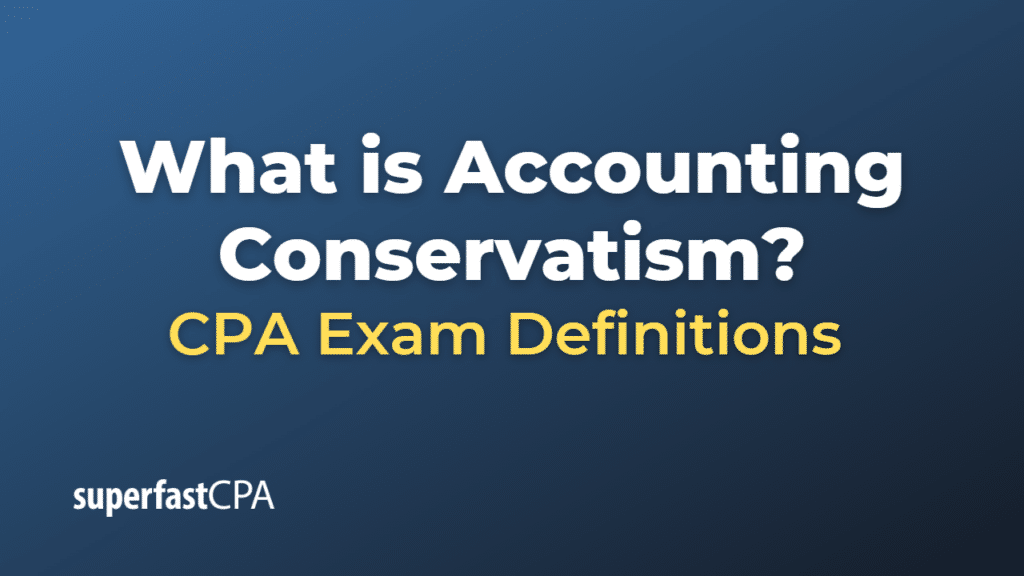Accounting Conservatism
Accounting conservatism, also known as the principle of prudence, is a fundamental concept in accounting that emphasizes caution and objectivity when preparing financial statements. It requires accountants to exercise a conservative approach when recognizing revenues, expenses, assets, and liabilities, ensuring that uncertainties and potential risks are taken into account.
Under the principle of accounting conservatism, revenues and assets should not be overstated, while expenses and liabilities should not be understated. In situations where multiple estimates or valuations are possible, accountants should choose the most conservative option, which generally results in a lower reported profit and net asset value.
The main reasons for adopting accounting conservatism are:
- Protecting investors and creditors: By providing a more conservative view of a company’s financial position and performance, conservatism helps protect the interests of investors and creditors, who rely on financial statements for decision-making purposes.
- Reducing the risk of overstating financial performance: Conservatism acts as a buffer against the overstatement of income and assets, which can arise due to management’s incentives to present an optimistic view of the company’s financial health.
- Enhancing comparability: When companies apply conservative accounting principles, it becomes easier for users of financial statements to compare the performance of different companies, as they are more likely to follow similar recognition and measurement practices.
- Allowing for the recognition of future gains: By recognizing potential losses and expenses earlier, conservatism allows for the subsequent recognition of future gains when uncertainties are resolved, providing a more balanced view of a company’s financial performance over time.
However, it is essential to note that excessive conservatism can lead to an understatement of a company’s financial position and performance, which may negatively impact the decision-making of stakeholders. It is crucial to strike a balance between conservatism and presenting a fair and accurate view of a company’s financial health.
Example of Accounting Conservatism
Let’s consider a fictional example of a technology company called “Innovative Tech” to illustrate the application of accounting conservatism in practice.
Innovative Tech is developing a new software product, and during the development process, the company incurs various research and development (R&D) costs. According to the accounting conservatism principle, these R&D costs should be expensed as they are incurred, as their future economic benefits are uncertain. By expensing the R&D costs immediately, Innovative Tech adopts a conservative approach, acknowledging the risk that the new software product may not generate the expected revenues or profits.
Suppose Innovative Tech also has a pending lawsuit related to patent infringement. The outcome of the lawsuit is uncertain, but the company’s legal counsel believes there is a reasonable likelihood that Innovative Tech may lose the case and face significant damages. In this situation, accounting conservatism dictates that the company should record a liability for the potential damages, even though the lawsuit’s outcome is not yet determined. This conservative approach ensures that the company’s financial statements reflect the potential risk associated with the lawsuit.
On the other hand, Innovative Tech has recently signed a contract for a significant software licensing deal with a major customer. However, the revenue recognition criteria have not yet been fully met, as the software has not been delivered and accepted by the customer. According to the conservatism principle, Innovative Tech should defer the revenue recognition until all criteria are met, ensuring that the company does not prematurely recognize the revenue and overstate its financial performance.
In this example, Innovative Tech applies accounting conservatism by expensing R&D costs, recognizing potential liabilities, and deferring revenue recognition until all criteria are met. This conservative approach helps provide a more accurate and reliable view of the company’s financial position and performance, protecting the interests of investors, creditors, and other stakeholders.













